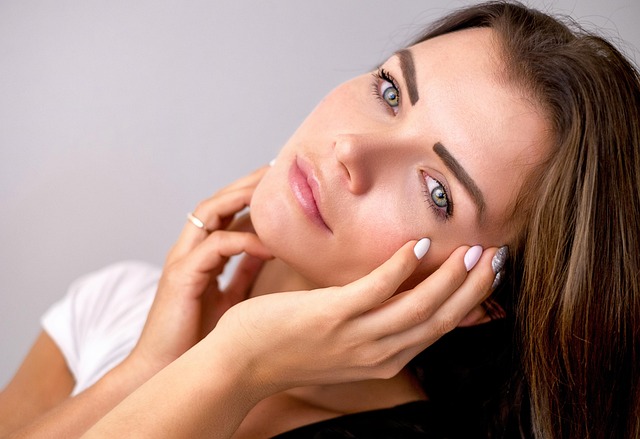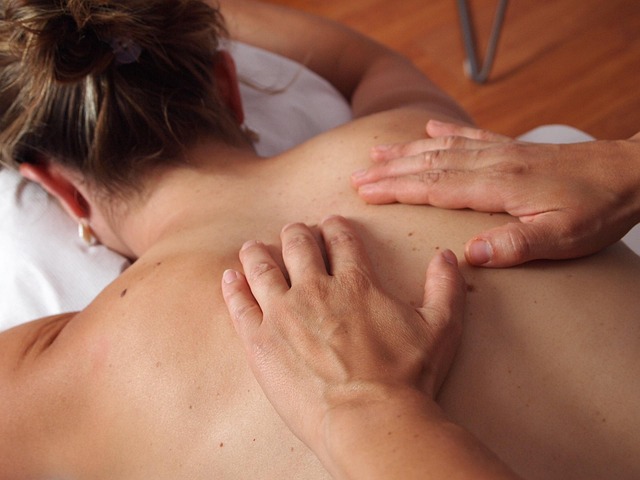RF Skin Resurfacing is a non-invasive skincare treatment using radio frequency technology to stimulate collagen production and improve skin texture. Effective for fine lines, wrinkles, acne scars, hyperpigmentation, and stretch marks, it promotes cell turnover for smoother, more youthful skin. Choosing the right device depends on specific skin concerns, with various RF technologies available. Thorough consultation and patient preparation ensure safe results. Post-procedure care involves following dermatologist instructions for optimal healing. Combining RF Skin Resurfacing with other advanced techniques amplifies its benefits, making it a popular choice in modern aesthetic practices. With careful management, it offers minimal risks and severe complications are rare.
“Unveil flawless skin with the latest advancements in RF Skin Resurfacing—a revolutionary non-invasive procedure taking the dermatology world by storm. This comprehensive guide explores the intricate science behind radio frequency technology and its remarkable benefits for addressing various skin concerns.
From understanding the precise mechanics of RF energy to choosing the ideal device, preparing for treatment, and managing recovery, we demystify every step. Additionally, we delve into cutting-edge techniques combining RF with other treatments, ensuring optimal results. Get ready to discover a safer, more effective approach to achieving youthful, radiant skin.”
Understanding RF Skin Resurfacing: A Comprehensive Overview

RF Skin Resurfacing, or Radiofrequency (RF) skin resurfacing, is a non-invasive cosmetic procedure that has gained significant traction in recent years for its ability to rejuvenate and transform the appearance of the skin. This advanced technology uses focused RF energy to target specific layers of the dermis, stimulating collagen production and promoting tissue regeneration.
The process involves delivering precise amounts of RF energy into the skin through a handpiece, which heats the targeted area, causing micro-injuries that trigger a natural healing response. As a result, old, damaged skin cells are replaced by new, healthy ones, leading to improved skin texture, reduced fine lines and wrinkles, and enhanced overall skin tone. RF Skin Resurfacing is considered an effective alternative to more aggressive resurfacing procedures, offering minimal downtime and a high degree of safety, making it appealing to individuals seeking a non-surgical approach to skin rejuvenation.
The Science Behind Radio Frequency Technology in Dermatology

Radio Frequency (RF) technology has emerged as a game-changer in dermatological procedures, offering advanced skin resurfacing solutions. This innovative approach utilizes focused energy waves to stimulate collagen production and enhance skin texture. By deeply penetrating the skin’s layers, RF treatments can effectively address various skin concerns, such as fine lines, wrinkles, and scars. The science behind it lies in the ability of RF energy to heat the deeper dermis, triggering a natural healing response that results in smoother, more youthful-looking skin.
RF Skin Resurfacing is a non-invasive procedure that provides precise control over the treatment area, ensuring minimal downtime and discomfort compared to traditional ablative methods. This technology allows dermatologists to tailor treatments to individual needs, making it an attractive option for those seeking effective and safe skin rejuvenation. With its ability to improve skin elasticity and promote cellular regeneration, RF technology continues to revolutionize the field of dermatology, offering promising results for achieving a radiant and rejuvenated complexion.
Benefits of RF Skin Resurfacing for Various Skin Concerns

RF (Radio Frequency) Skin Resurfacing offers a multitude of benefits for addressing various skin concerns, making it a popular choice in the advanced skincare realm. This non-invasive treatment uses controlled radio waves to stimulate collagen production and improve skin texture, leading to a smoother, more youthful appearance. By targeting specific depths of the dermis, RF technology can effectively combat signs of aging such as fine lines, wrinkles, and loose skin.
In addition to anti-aging benefits, RF Skin Resurfacing is also successful in treating acne scars, hyperpigmentation, and even stretch marks. The gentle yet powerful nature of the treatment promotes cell turnover, helping to even out skin tone and texture. Moreover, it can enhance product penetration during subsequent skincare routines, maximizing the effects of other treatments like serums and moisturizers.
Choosing the Right RF Device for Optimal Results

When it comes to RF skin resurfacing, selecting the ideal device is paramount for achieving desirable outcomes. Each RF technology offers unique advantages and caters to specific skin concerns, making personalized choices essential. For example, Micro-Needling RF devices create controlled micro-lesions to stimulate collagen production, ideal for addressing fine lines and acne scars. On the other hand, Ablation RF devices use heat energy to resurface the skin, effective for more severe conditions like deep facial wrinkles and irregular skin textures.
To maximize benefits, consider factors like treatment area, desired results, and skin type. Consulting with a dermatologist or skincare expert can help guide your selection. They can assess your unique needs and recommend an RF device that not only aligns with your goals but also suits your skin’s specific requirements, ensuring optimal safety and efficacy during the RF skin resurfacing process.
Pre-Treatment Preparation and Patient Expectations

Before undergoing any skin resurfacing treatment, including RF Skin Resurfacing, proper preparation is essential to ensure optimal results and patient satisfaction. This involves a detailed consultation where a dermatologist assesses the patient’s skin condition, medical history, and expectations. During this meeting, patients can ask questions and voice concerns, setting realistic goals for the procedure. The dermatologist will also provide pre-treatment instructions, which may include avoiding certain medications or supplements that could increase bleeding risk. Additionally, they might recommend specific skincare routines to prepare the skin, enhancing its receptiveness to the upcoming treatment.
Patient expectations are a significant aspect of this process. They should be made aware of what RF Skin Resurfacing involves, including the potential benefits and temporary side effects. It is crucial to manage their expectations by explaining that skin resurfacing is not an instant fix but a gradual process that requires time for healing and results to become apparent. This preparation ensures patients are well-informed, reducing anxiety and fostering a positive experience.
Post-Procedure Care and Recovery Tips

After undergoing RF Skin Resurfacing, proper post-procedure care is essential for optimal recovery. It’s crucial to follow your dermatologist’s specific instructions, which may include using prescribed topical medications and avoiding certain activities or products that could irritate the treated skin. Staying hydrated, applying gentle moisturizers, and using sunscreen are vital components of the healing process, as these measures help to soothe the skin, reduce redness, and prevent further damage.
During the recovery period, it’s important to be patient and avoid touching or scratching the treated area. Exposing the skin to excessive heat, such as hot tubs or saunas, should also be avoided until healing is complete. Eating a nutritious diet rich in antioxidants and vitamins can aid in the skin’s natural regeneration process, while getting adequate rest allows the body to focus on repairing the tissue. Regularly monitoring the treated area for any signs of infection or unexpected reactions is key to ensuring a smooth recovery.
Advanced Techniques: Combining RF with Other Skin Treatments

In the realm of advanced skin resurfacing, combining Radio Frequency (RF) treatments with other innovative techniques has proven to be a game-changer. RF Skin Resurfacing, for instance, offers precise heating of the dermis layer, stimulating collagen production and improving skin texture. When paired with topical agents or light-based therapies, its efficacy is enhanced, allowing for more comprehensive rejuvenation.
This integrated approach leverages the strengths of each treatment modality. For example, combining RF with laser therapy can target specific skin concerns like fine lines, wrinkles, and hyperpigmentation simultaneously. Similarly, pairing RF with chemical peels can deepen exfoliation while promoting faster cell turnover, resulting in smoother, more even-toned skin. Such combinations offer tailored solutions for various skin types and conditions, making them popular choices in today’s advanced aesthetic practices.
Safety, Side Effects, and Future Trends in RF Skin Resurfacing

Safety and side effects are paramount considerations in any skin treatment, especially with innovative procedures like RF (Radio Frequency) Skin Resurfacing. While generally considered safe, as with any medical intervention, there are potential risks. Common temporary side effects include redness, swelling, and mild discomfort at the treated areas. More severe but rare complications may include tissue damage, infection, or changes in skin color. However, when performed by qualified professionals using approved equipment, RF Skin Resurfacing has an excellent safety profile.
Looking ahead, the future of RF Skin Resurfacing appears bright with ongoing technological advancements. Researchers are continually exploring new ways to enhance treatment outcomes and minimize side effects. For instance, combining RF with other technologies like lasers or light-based therapies offers synergistic effects, potentially leading to more efficient resurfacing and improved patient satisfaction. Additionally, the development of smart, adaptive devices that can adjust settings in real time based on skin feedback promises safer and more personalized treatments. These trends suggest a promising horizon for RF Skin Resurfacing, continuing its evolution as a top choice for achieving smoother, younger-looking skin.
